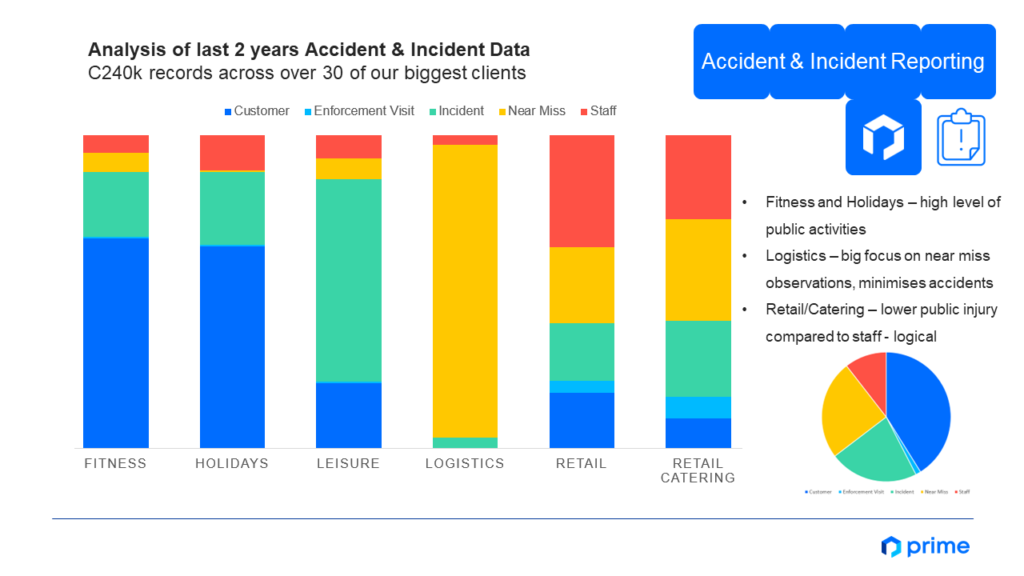Most of our customers use our Accident and Incident Reporting system with a focus on reporting injuries and incidents but the system can also be used to report Near Misses, or as some customers call them, Hazards or Unsafe Acts or Behaviour.
At our recent Prime User Conference, our MD Paul Ramsell presented an analysis of accident, incident and near miss data taken from around 250,000 records across 30 of our biggest customers. Injuries to customers and staff accounted for half of that data, with Near Misses and Hazards only about a quarter, and the vast majority of that was from only one sector, the Logistics and Warehousing sector.

It was interesting to see that in sectors that deal with members of the public on their sites, such as fitness and leisure, holidays, and retail and retail catering, near miss reporting was only a small proportion of their data. This indicates that the teams are so busy reporting when things actually go wrong, such as injury, loss or damage, that there is no time to report when something didn’t go wrong but could have. This also reflects the culture in those sectors. Are staff actively looking out for hazards or unsafe behaviour?
In the logistics and warehousing sector, a massive 94% of all reports submitted in Prime were near misses or hazards. When we talk to those customers we hear stories of them setting team members targets to report unsafe acts and behaviours, which could be bonus related, which in turn encourages them to look for these events, thereby reducing the frequency of them and ultimately reducing injuries and incidents, which we would all want to do in our own workplaces.
Another one of our customers totally changed how their near miss events were reported, training staff to report Hazards, which were defined as “any non-event that has the potential to result in harm”. We were asked to modify our system to include these new reporting processes, building in a simple causation analysis section, with specific Immediate and Underlying Cause fields that the user could complete by answering a range of simple questions. Prime is a very customisable system so we were well positioned to deliver these changes, and work with the customer to ensure it gave them what they needed.
We can also feed the data in Prime into our customers’ own data warehouse systems, where they can integrate it with data from other systems to give them an accurate picture of activity across all parts of the business.
If you would like to know more about how Prime could be adapted to suit your own needs, or to see how it could help your own hazard and near miss reporting needs, then please get in touch to arrange a call and a demo.